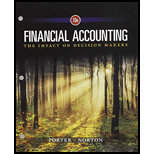
Concept explainers
1.
Recognition: is the process of formally recording an item into financial statements of a business as an asset, liability, revenue or expense. Recognition includes showing an item in both words and numbers. The purpose of financial statements is to communicate various types of economic information about a company. The job of the accountant is to decide which information should be recognized in the financial statements and how the effects of that information is on the business.
Revenue recognition is a principle which specifies conditions under which revenue is shown on the income statement for the period in which they are earned, not in the period when cash is collected.
Expense recognition specifies the condition under which expense is shown on the income statement for the period which they have incurred not in the period in which it is paid. This is on the basis of accrual accounting.
Requirement 1
The preparation of income statement for the year 1 and 2.
b
Recognition: is the process of formally recording an item into financial statements of a business as an asset, liability, revenue or expense. Recognition includes showing an item in both words and numbers. The purpose of financial statements is to communicate various types of economic information about a company. The job of the accountant is to decide which information should be recognized in the financial statements and how the effects of that information is on the business.
Revenue recognition is a principle which specifies conditions under which revenue is shown on the income statement for the period in which they are earned, not in the period when cash is collected.
Expense recognition specifies the condition under which expense is shown on the income statement for the period which they have incurred not in the period in which it is paid. This is on the basis of accrual accounting.
Requirement 2
The preparation of closing entries for each year
Want to see the full answer?
Check out a sample textbook solution
Chapter 4 Solutions
Bundle: Financial Accounting: The Impact on Decision Makers, Loose-Leaf Version, 10th Edition + LMS Integrated for CengageNOWv2â„¢, 1 term Printed Access Card
- I need help with this general accounting question using the proper accounting approach.arrow_forwardPlease explain the solution to this general accounting problem with accurate explanations.arrow_forwardI need guidance with this general accounting problem using the right accounting principles.arrow_forward
- Please provide the answer to this general accounting question with proper steps.arrow_forwardCan you explain the correct methodology to solve this general accounting problem?arrow_forwardI am trying to find the accurate solution to this general accounting problem with appropriate explanations.arrow_forward
 Financial AccountingAccountingISBN:9781305088436Author:Carl Warren, Jim Reeve, Jonathan DuchacPublisher:Cengage Learning
Financial AccountingAccountingISBN:9781305088436Author:Carl Warren, Jim Reeve, Jonathan DuchacPublisher:Cengage Learning College Accounting (Book Only): A Career ApproachAccountingISBN:9781337280570Author:Scott, Cathy J.Publisher:South-Western College Pub
College Accounting (Book Only): A Career ApproachAccountingISBN:9781337280570Author:Scott, Cathy J.Publisher:South-Western College Pub Individual Income TaxesAccountingISBN:9780357109731Author:HoffmanPublisher:CENGAGE LEARNING - CONSIGNMENT
Individual Income TaxesAccountingISBN:9780357109731Author:HoffmanPublisher:CENGAGE LEARNING - CONSIGNMENT




